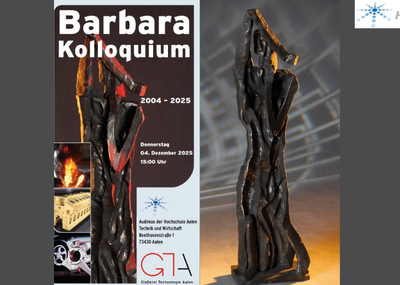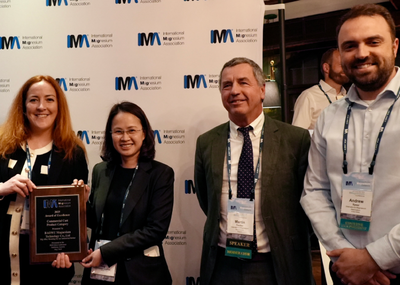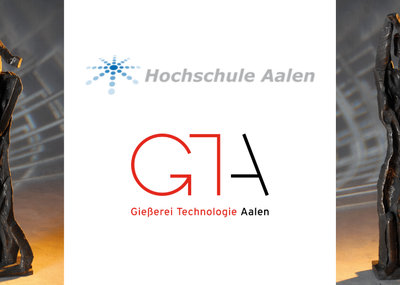The lecture series opened with Stefan Kneer and Denis Hopp from Albert Handtmann Metallgusswerk, who presented on “Megacasting – Component Development in Transition.” Kneer discussed the evolution of megacasting technology and the increasing interest from European OEMs. Hopp delved into mechanical property changes in wall thicknesses over 6 mm and long flow paths, using a battery frame as an example from a joint research project with Aalen University.
Alessandro Benini from Italian machine manufacturer IDRA Group followed with a talk on “The Growth of Die Casting in Body-in-White Applications.” IDRA currently holds a 25% market share of the 132 gigacasting machines delivered worldwide, ranging from 5,000 to 10,000 tons of clamping force – with some systems in Asia reaching 20,000 tons. Benini also introduced IDRA’s real-time “5S-Injection” pressure control system.
Dr. Todor Ivanov from Bocar Tech Center in Waldmössingen highlighted how the company supports tooling and process development for its plants in Mexico and the U.S. He demonstrated how optimized runner systems can reduce air entrapment while significantly cutting material usage.
Artur Seltenreich of StrikoWestofen GmbH introduced the In-Cell-Melting process – an integrated approach that combines melting, holding, and dosing in one unit. For megacasting applications, this system involves installing shaft furnaces on an elevated second level above the die casting machines.
Dr. Marcus Schopen from MAGMA Gießereitechnologie GmbH presented advancements in simulating local mechanical properties of structural parts. He explained how accurate thermal modeling, ejection force simulation, and wear prediction can optimize casting quality and tooling lifespan.
Former Aalen doctoral student Florian Mäuser presented the “MAGIT” project, which has successfully industrialized gas injection technology. The process allows for hollow, media-carrying parts without cores, significantly reducing assembly effort. Production examples from Volkswagen confirmed its practical feasibility.
Following the exhibitor presentations, the traditional “Foundry Evening” in the university’s foundry lab offered an ideal setting for informal technical exchange.
The second day began with Alexander Platzer (TPI) and Timo Günzel (Bole) showcasing magnesium thixomolding on cold-chamber machines – a process gaining traction in China’s automotive sector. Thixomolding eliminates the need for protective gas and offers advantages in porosity and energy efficiency.
Cornelia Juds from Canias focused on “CO₂-Efficient Smart Production.” She highlighted digital solutions such as IoT, energy monitoring, resource planning, and sustainability reporting tailored for foundry operations.
Felix Richter (HEITEC PTC GmbH) introduced two modular systems for non-destructive testing of megacastings: the HeiDetect Flex Robot System and the RoboCT System, both capable of inspecting large components with high precision.
Dr. Rainer Balbach (AC Agility Consulting GmbH) discussed new application areas for die-cast components, particularly for cooling housings in electric mobility and hydrogen technology. He introduced friction stir welding and advanced laser welding (with TRUMPF’s multifocus optics) as key enablers.
Dr. Stefan Wittmann (Teraport GmbH) shared a new approach to casting development based on early quality gates to identify design or simulation issues and avoid costly iterations.
The event concluded with research presentations from Aalen University:
-
Max Schütze presented hybrid sand cores for undercuts in die casting, including a world-first video of mold filling filmed using a high-speed camera.
-
Valentin Ziegler discussed a joint project with Handtmann focused on property variations in die-cast parts related to flow length and wall thickness.
-
Christos Mangos analyzed the fatigue behavior of modern zinc alloys, showing that optimized casting parameters can increase fatigue strength by up to 30%. He also outlined a follow-up study on the effects of electroplating on fatigue strength.
-
Thomas Weidler compared conventional magnesium die casting with Vacural® technology, which offers superior mechanical properties through vacuum-assisted metal transport.
-
Annike Bossert introduced hybrid cast components combining wood and light metals – an innovative approach to harness the CO₂ storage potential of wood in sustainable foundry solutions.
A traditional Swabian lunch in the foundry lab rounded off the colloquium, providing another opportunity for in-depth discussion and networking around the latest developments in die casting.














